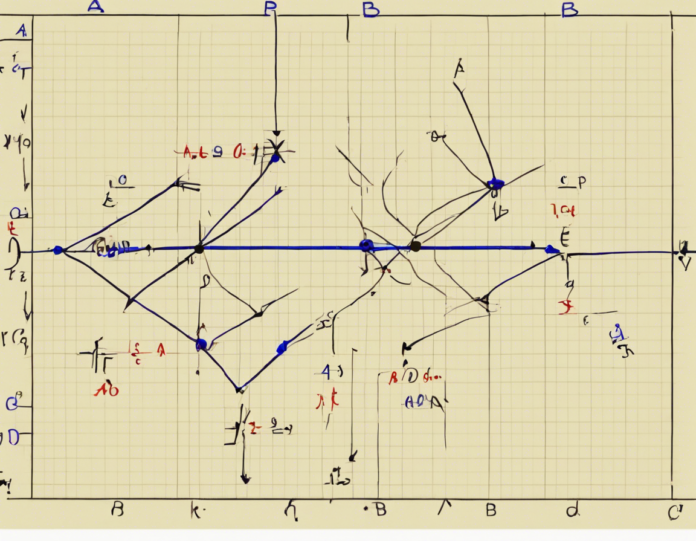Equivalent Capacitance Between A and B in Series and Parallel Configurations
In the world of electrical circuits, capacitors play a fundamental role in storing and releasing electrical energy. When multiple capacitors are combined in a circuit, their equivalent capacitance becomes a crucial aspect to consider for analyzing and designing circuits.
Equivalent capacitance refers to the single capacitance value that can replace a group of capacitors while preserving the original circuit characteristics. The equivalent capacitance depends on how the capacitors are connected in the circuit, whether in series or parallel.
Series Configuration:
When capacitors are connected in series, the total capacitance of the circuit decreases. In a series configuration, the inverse of the total capacitance is equal to the sum of the inverses of each individual capacitance:
[ \frac{1}{C_{eq}} = \frac{1}{C_1} + \frac{1}{C_2} + \frac{1}{C_3} + \ldots ]
Where:
– ( C_{eq} ) = equivalent capacitance
– ( C_1, C_2, C_3, \ldots ) = individual capacitances in series
Furthermore, when only two capacitors are in series, the equivalent capacitance can be calculated using the formula:
[ C_{eq} = \frac{C_1 \times C_2}{C_1 + C_2} ]
Parallel Configuration:
In contrast, connecting capacitors in parallel increases the total capacitance of the circuit. In a parallel configuration, the total capacitance is the sum of the individual capacitances:
[ C_{eq} = C_1 + C_2 + C_3 + \ldots ]
Where:
– ( C_{eq} ) = equivalent capacitance
– ( C_1, C_2, C_3, \ldots ) = individual capacitances in parallel
Application to A and B:
Considering the specific scenario involving capacitors connected between points A and B, the equivalent capacitance can be determined through a combination of series and parallel configurations. By analyzing the arrangement of capacitors in the circuit, one must identify whether they are grouped in series, parallel, or a mix of both to calculate the total equivalent capacitance.
By adding the capacitors through parallel connections and then considering the resulting equivalent capacitances in series, one can simplify the circuit and determine the single equivalent capacitance between points A and B. This process allows for the effective analysis and understanding of complex circuits involving multiple capacitors.
Practical Implications:
Understanding the concept of equivalent capacitance is valuable in various electrical applications, such as filter circuits, energy storage systems, signal processing, and electronic devices. By calculating the equivalent capacitance, engineers and designers can optimize circuit performance, determine energy storage capabilities, and ensure the efficient operation of electronic systems.
In summary, the equivalent capacitance between points A and B in a circuit depends on the arrangement of capacitors in series and parallel configurations. By applying the principles of series and parallel connections, one can simplify the circuit and calculate the total equivalent capacitance effectively.
Frequently Asked Questions (FAQs)
- What is the significance of calculating equivalent capacitance in circuits?
-
Calculating equivalent capacitance helps simplify complex circuits, analyze circuit behavior, and optimize circuit design for efficient performance.
-
Can capacitors in a circuit be neither in series nor parallel configurations?
-
Capacitors in a circuit are typically arranged in series, parallel, or a combination of both configurations to determine the equivalent capacitance.
-
How does the equivalent capacitance change when capacitors are added in series?
-
Adding capacitors in series decreases the equivalent capacitance, as it follows an inverse relationship according to the formula mentioned earlier.
-
What happens to the equivalent capacitance when capacitors are connected in parallel?
-
Connecting capacitors in parallel increases the equivalent capacitance, as they add up directly in parallel configurations.
-
What practical applications benefit from understanding equivalent capacitance in circuits?
-
Various electronic systems, signal processing circuits, energy storage solutions, and filter design processes utilize equivalent capacitance calculations for optimal performance.
-
Is there a limit to the number of capacitors that can be combined to calculate equivalent capacitance?
-
There is no specific limit, as long as the capacitors can be arranged in series or parallel connections to calculate the equivalent capacitance effectively.
-
How can one experimentally verify the concept of equivalent capacitance in circuits?
-
By constructing circuits with known capacitor values and measuring the resulting capacitance, one can validate the theoretical calculations of equivalent capacitance.
-
What role does equivalent capacitance play in designing power supply circuits?
-
Equivalent capacitance helps determine the total energy storage capacity of power supply circuits, ensuring stable voltage outputs and efficient power delivery.
-
What are some common challenges faced when calculating equivalent capacitance in complex circuits?
-
Complex circuit configurations, varying capacitor values, and non-ideal behaviors such as leakage currents can pose challenges in accurately determining equivalent capacitance.
-
How does temperature affect the capacitance values in circuits, and subsequently, the equivalent capacitance?
- Temperature can alter the capacitance values of capacitors, leading to variations in the equivalent capacitance of the circuit, which must be considered in circuit design and analysis.









